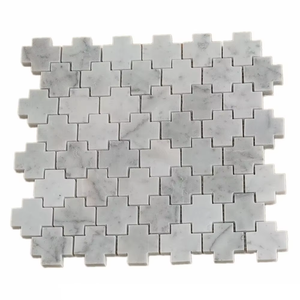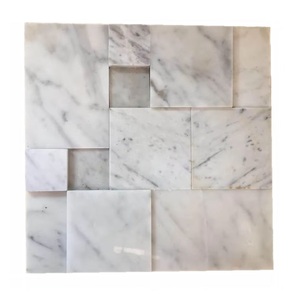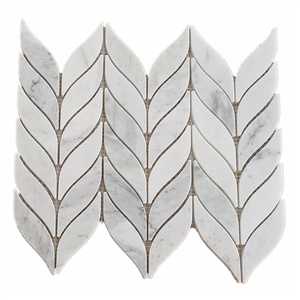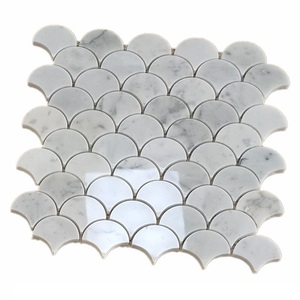
All categories
Featured selections
Trade Assurance
Buyer Central
Help Center
Get the app
Become a supplier

(1457 products available)


























A tile backing mesh is a fiberglass mesh used to reinforce backing boards and cement surfaces in tiling. It provides additional strength to the surface where the tiles are installed, which can be floors, walls, or ceilings. The backing mesh prevents breakage, cracks, and tile movement on the installed surface. It is lightweight, flexible, and easy to install, making it an ideal choice for surfaces that require added support.
The types of tile backing mesh include the following:
Fiberglass Mesh Tape
Fiberglass mesh tape comes with self-adhesive backing. It is primarily used for patching and jointing gypsum board or drywall. The tape is available in different mesh sizes, providing varying levels of support and strength. Its primary application is in wall and ceiling tile projects.
Fiberglass Mesh Sheet
The fiberglass mesh sheets are larger in size than the tapes. They are used for covering extensive areas, such as backer boards and cementitious surfaces. The sheets come in different weights and mesh sizes, offering varying reinforcement levels. They are primarily used in wall and floor tiling projects.
Paper-Based Mesh
This backing mesh is primarily used in interior applications. It is not as durable or strong as fiberglass mesh. The paper-based mesh is primarily used in wall tiling projects.
Metal Lath Mesh
Metal lath mesh is made from galvanized steel or aluminum. It is highly durable and offers excellent reinforcement support. The lath metal is heavy and more challenging to install than fiberglass mesh. It is used primarily in high-stress areas, such as shower niches and tubs.
Cement Board Mesh
This backing mesh is integrated into cement boards. It provides a robust and stable base for tiling. The mesh enhances the tensile strength of the board, preventing breakage and cracks. Cement board mesh is primarily used in floor and wall tiling projects, especially in high-moisture areas like showers and bathrooms.
Woven Polyester Mesh
This type of tile backing mesh is lightweight and easy to work with. It is primarily used for reinforcing plaster surfaces in interior applications. The mesh offers decent reinforcement support for low-traffic areas, such as backsplashes.
Tile backing mesh is essential for any home renovation project involving tiles. Its importance cannot be overstated, and it is used for many different functions. These include:
Tile backing mesh also has other desirable features that make it popular and widely used in the construction industry. These features include:
Backing mesh for tiles is used in many applications. These include:
Backing Tiles in Bathrooms and Showers
In bathrooms, mesh tile backing is attached to walls. It provides a solid surface for tile installation. The tiles protect walls from water damage. They also make bathrooms and showers look attractive. Different types of tiles are used in these areas. They include ceramic, porcelain, mosaic, and glass tiles. The mesh ensures these tiles stay in place for a long time.
Backing Tiles in Kitchens
Tile mesh is also used as backing in kitchens. It supports tiles on walls. The tiles are easy to clean. They also add color and beauty to the kitchens. Tile mesh is also used on kitchen backsplashes. It makes attaching small and intricate tiles easier. The tiles make the backsplashes look awesome and unique.
Tile Backing in Indoor Spaces
Tile backing mesh is also used in indoor spaces. These include living rooms, dining areas, and hallways. The mesh creates a solid surface for tile installation on walls. It supports heavy tiles like natural stone. The tiles enhance the indoor area's visual appeal. They also add value and elegance to the space.
Tile Backing in Outdoor Spaces
Backing meshes for tiles are also used in outdoor areas. These include patios, pool areas, and outdoor kitchens. The mesh creates a solid substrate for tile installation on different surfaces. It also prevents tile cracking due to outdoor temperature changes. The backing mesh supports tiles and stops moisture from damaging surfaces. It also allows water to flow freely and prevents mold growth.
When choosing a backing mesh for tiles, there are several factors retailers should consider to ensure they stock products that meet the needs of their customers. Here are some of them:
Consider the type of tiles
Retailers should consider the type of tiles their customers intend to use. For example, fiberglass mesh is suitable for mosaic and glass tiles, while PVC and plastic mesh can be used for ceramic and porcelain tiles. Wire mesh is suitable for cement tiles. The type of tile will influence the choice of backing mesh, as certain combinations offer better support and adhesion.
Assess the installation environment
The installation environment plays a big role in determining the ideal backing mesh. Areas exposed to high moisture, like bathrooms and kitchens, require waterproof and corrosion-resistant meshes. Such meshes include PVC, plastic, and fiberglass meshes. In addition, the mesh type should be suitable for the surface where the tiles will be installed. Flat surfaces need simple meshes, while uneven surfaces may require additional support.
Evaluate the weight and size of the tiles
Consider the customer budget
The price of backing meshes varies depending on the type and material used in manufacturing. Retailers should stock backing meshes at different prices to cater to customers with different budgets. This will ensure customers get backing meshes that are within their project budget.
Compatibility with adhesives
The choice of tile adhesive mesh backing plays an important role in the overall performance of the tile. Retailers should ensure the backing mesh is compatible with the adhesive to be used during installation. Plastic and PVC meshes are suitable for thin-set adhesives, while fiberglass and wire meshes are suitable for mortar.
Ease of handling and installation
Backing mesh is usually easy to install. However, some meshes are lighter and more flexible than others, making them easier to handle during installation. When choosing backing mesh, retailers should consider ease of handling and installation to reduce labor costs and installation time.
Q1: Is the tile backing mesh waterproof?
A1: Yes, the tile backing mesh is waterproof. It prevents moisture from seeping through the tiles, which protects the wall from water damage. However, waterproof does not mean waterproof. It is important to note that not all types of mesh are waterproof. For example, aluminum and PVC mesh are not waterproof.
Q2: Can the tile backing mesh be cut to size?
A2: Yes, the tile backing mesh can be cut to size. This is commonly done to fit specific tile shapes and sizes or to accommodate different areas of a wall or floor. Use a sharp utility knife to ensure clean edges and avoid injuries; wear cut-resistant gloves.
Q3: Does the tile backing mesh affect the appearance of the finished tiles?
A3: No, the tile backing mesh does not affect the appearance of the finished tiles. Its purpose is to provide support and stability for the tiles. The back of the tile determines the appearance of the finished product.
Q4: Can the tile backing mesh be reused?
A4: It is not recommended to reuse the tile backing mesh. Reusing it can compromise the stability and support of the tiles. Additionally, the adhesive used to attach the tiles to the mesh may become dislodged or lose its effectiveness over time.
Q5: What are the types of tile backing mesh?
A5: There are three main types of tile backing mesh: fiberglass mesh, ceramic tile mesh, and nylon tile mesh. Nylon and ceramic tile meshes are ideal for wall applications, while fiberglass mesh is suitable for interior and exterior applications.